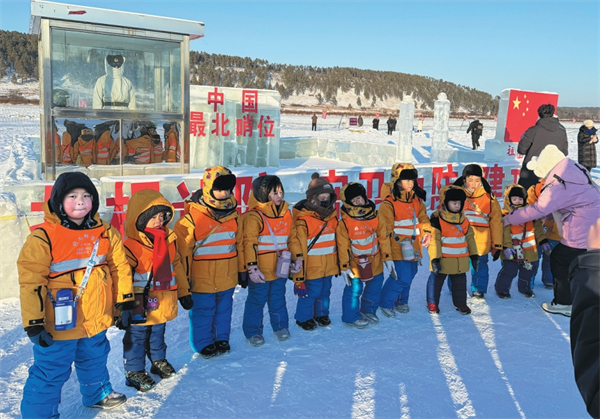Home>Harbin Today
GM influx a dilemma for consumers, farmers
Updated : 2013-06-28
By ( Xinhua )
Liu You, a farmer in Keshan County of northeast China's Heilongjiang province, stopped planting soybeans last year, due to the crop's low yield and economic return.
He grows corn instead, which yields much more than soybean and brings more income. "The price of soybeans has kept almost unchanged while the prices of corn and rice have been rising in recent years," says Liu.
In Keshan County, the plantation area of soybeans nearly halved from 2007 to 2012, showing farmers have less interest in planting the crop, a trend that is playing out in many other rural areas.
The root for the decisions taken by Liu and his peers can be found in China's rising imports of genetically modified (GM) soybeans. By virtue of the modifications, GM soybeans are more economical to produce than their conventionally-farmed equivalents. With large-scale production of GM crops not yet approved in China, domestic farmers of soybean are being priced out of the market as the country proves happy to look to imports for this most quintessential of Chinese foodstuffs.
However, this is far from the only troubling aspect of imported GM food. GM remains controversial over doubts as to its safety. As it flows into China, the country is having to face up to such questions.
Last week, China's Ministry of Agriculture announced the approval of three varieties of GM soybeans to be imported as processing materials.
The news triggered fresh domestic concerns about safety, although there has been large-scale commercial plantation of GM crops for years in the United States and many other countries.
China began to import GM soybeans in 1997 to meet surging domestic demand, according to Peng Yufa, a senior member of the country's GM crop bio-safety committee and a researcher at the Chinese Academy of Agricultural Sciences.
Last year, China imported 58.38 million tonnes of soybeans while the country's own soybean production was about 13 million tonnes, official statistics showed.
For Chinese farmers, the plantation of corn per mu, a Chinese measurement which equals about 667 square meters, can earn them about 300 to 400 yuan (about $48 to $65) more in revenue than that of soybeans on average.
This has prompted more farmers to stop planting soybeans. In Heilongjiang, a major soybean producer in China, the area used for plantations of this legume reduced to about 40 million mu last year from about 70 million mu in 2009.
Although edible soybean oil made from GM produce is common in Chinese supermarkets, most citizens worry about its safety despite relatively lower prices than equivalents such as peanut oil.
"When I buy edible oil, I will make sure whether they have GM marks. After all, there is no final conclusion as to the safety of GM products," says a lady surnamed Zheng in Guangzhou, capital of south China's Guangdong Province.
Results of an online survey conducted by Chinese news portal Sina.com showed on Wednesday that about 85 percent of the 30,000 voting netizens said they would not buy GM products and 78 percent believed GM is harmful to people's health.
To woo consumers, some companies in Heilongjiang have tried to highlight their non-GM soybeans. For example, the Heilongjiang Jiusan Non-GM Soybean Trade Center was set up last September.
"The key is to allow and encourage Chinese scientists to catch up with others and come up with quality products, including safe GM products. Only in this way can we change the status quo of China's soybean products," says Rao Yi, dean of the School of Life Sciences at Peking University.

Harbin ramps up childcare services
A new comprehensive service center for childcare in Harbin is expected to be finished by the end of the year.
-
Talent policies drive enterprise development in Harbin
Harbin's "30 New Talent Policies" represents an iterative upgrade to the talent policy system, helping attract and retain talent to bolster economic and social development.
-
Official website of 2025 Asian Winter Games goes live
Harbin, the host city of the 9th Asian Winter Games, has announced that the official website for the 2025 event has recently gone live.
-
Harbin launches measures to facilitate more foreign trade
In the first three quarters of 2023, the total import and export value of Heilongjiang province's goods trade hit 218.22 billion yuan.





